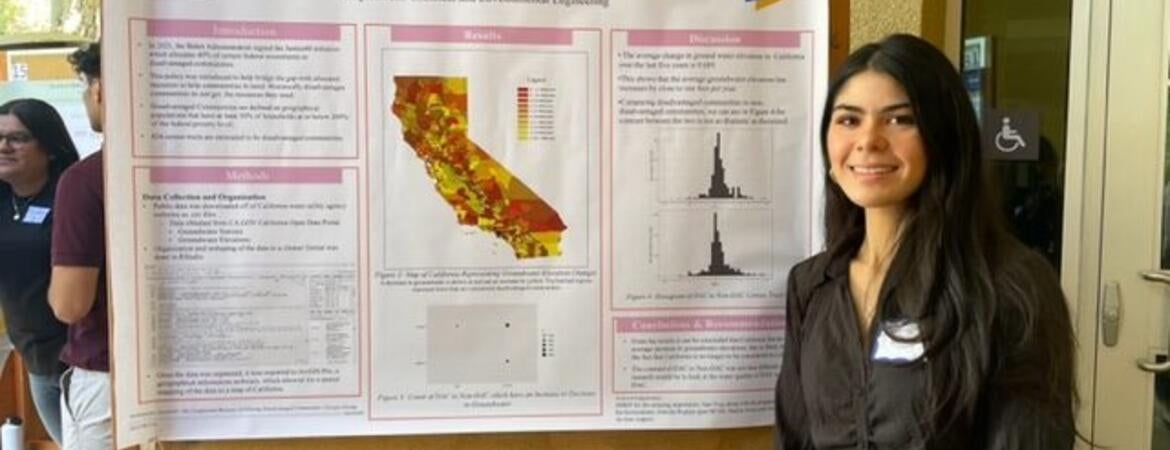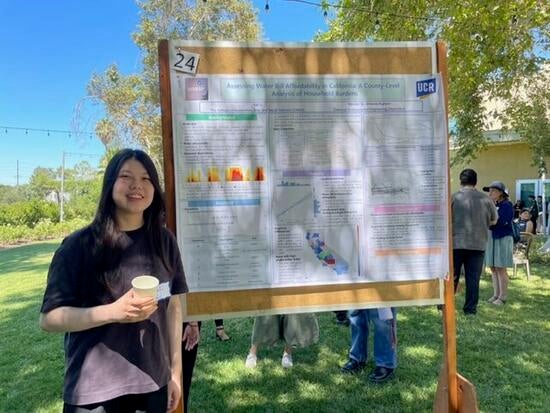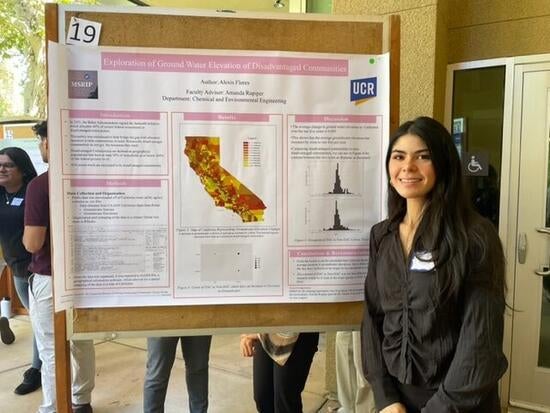
This year we had two students participate in an 8-week summer research program: Alexis Flores and Jiali Li.
Established in 1987, MSRIP is an eight-week summer research program designed for UCR undergraduate students from educationally and/or economically disadvantaged backgrounds. Participants work under the supervision of a faculty mentor on the mentor’s research project. MSRIP is intended to encourage outstanding students from diverse backgrounds to pursue their PhD by strengthening their academic and professional development. The program provides an opportunity for these students to develop a competitive profile with which to seek admission to UC Riverside and the University of California in general, as well as colleges and universities nationwide.
At the end of MSRIP’s summer program, MSRIP participants participate in our annual Symposium where students have the opportunity to present their research to staff, faculty, and peers.
Link to Symposium Website: https://apro.ucr.edu/2023-msrip-symposium
Jiali Li, Statistics Major – MSRIP Participant
Abstract: Assessing water bill affordability in California: a country-level analysis of household burdens.
Water affordability has increasingly become a focal point in California, with variations in water costs across different counties affecting household burdens. This study aims to assess water bill affordability for households within most individual counties in California from 2016 to 2021. By gathering data on water bills, measured in $/100 cubic feet (ccf), from water audits and multiplying it by the Gallon Per Capita Per Day (GPCD), the household water expenditures per day were calculated. The findings reveal that over the period from 2016 to 2021, the average annual water cost within each county was about $471.13, and the average annual unaffordable rate among counties was approximately 25.29%. Notably, the average water cost experienced both increases and decreases during this period, with the most significant average decrease of about 8.27% occurring from 2020 to 2021. In this study, ‘unaffordable’ is defined as annual water bills for each household exceeding 1% of their annual income. The results of this study illustrate the large disparities in water affordability across different California counties. They also highlight the need for targeted policy adjustments, focusing on creating a more equitable water pricing structure to better accommodate the unique needs and income levels within each county, thereby promoting a more sustainable water management approach in California.
Alexis Flores, Environmental Engineering Major – LatinX and the Environment Participant
Abstract: Examination of Contaminated Groundwater in Disadvantaged Communities in California
In the United States, an estimated 400 billion gallons of water are withdrawn daily from surface and groundwater for public supply, domestic, irrigation, livestock, aquaculture, industrial, mining, and thermoelectric-power generation. In 2015, California withdrew 17,400 million gallons per day from groundwater sources and 11,300 million gallons per day of surface water. California uses 28,000 million gallons per day for the different sectors as stated above. As we can see water is a necessary resource in the daily lives of a 21st century populace. California having semiarid conditions and experiencing drastic climate change, including drought has put a lot of strain on California’s water supply. In order to meet water demands for Californians equally it is important to examine which populations may require water and if that water is safe to use. Historically disadvantaged communities have not received the same care as other communities, so this project aims at helping amend this imbalance. This research looks at groundwater levels and contamination throughout California to better understand where resources may need to be allocated. To do this, groundwater levels and contamination data were obtained from public government agencies and organized and reshaped using RStudio. The data was then mapped spatially with ArcGIS to show regions of water contamination that could be cross referenced with disadvantaged communities from the California census. Knowing which communities have scarce or unsafe water supplies will help policymakers determine where efforts should be focused.

